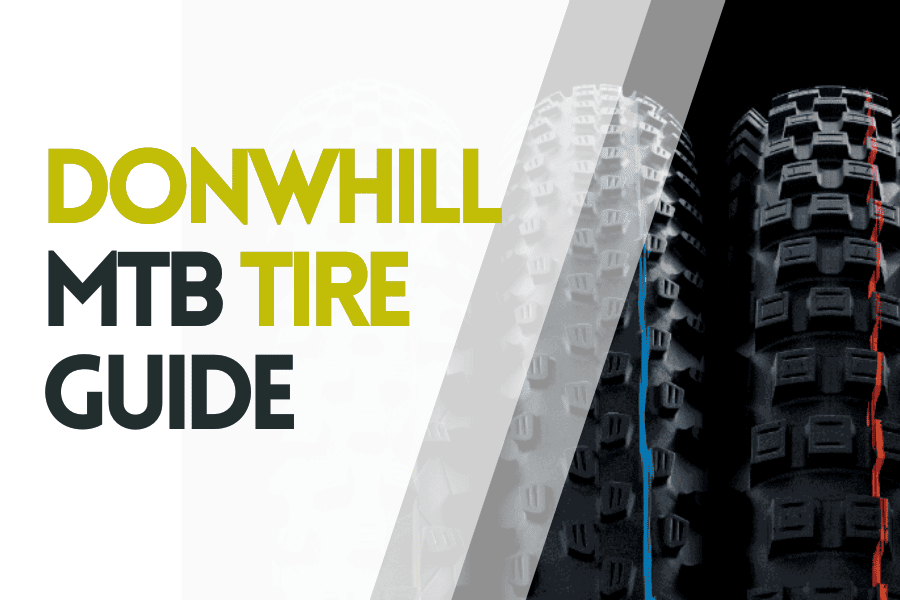While there is no one single correct tire for downhill mountain biking, you can dial in the best tires for you by knowing what to look for and what differences casings, compounds and treads make.
Key Takeaways
- Size: 2.4″ width is the most common, but up to 2.6″ is good. Only go narrower for mud tires.
- Casings: The stiffest, heaviest for the rear and maybe a level lighter for the front tire.
- Compounds: Soft for the front and medium for the rear tire if you want more durability. (The hardest compounds are usually not available for DH tires)
- Treads: Either the same front and rear for predictability or taller knobs up front and wider, shallow knobs in the rear.
Treads
A tire’s name is always based on the tire profile. Treads like Minion and Magic are timeless classics every mountain biker knows.
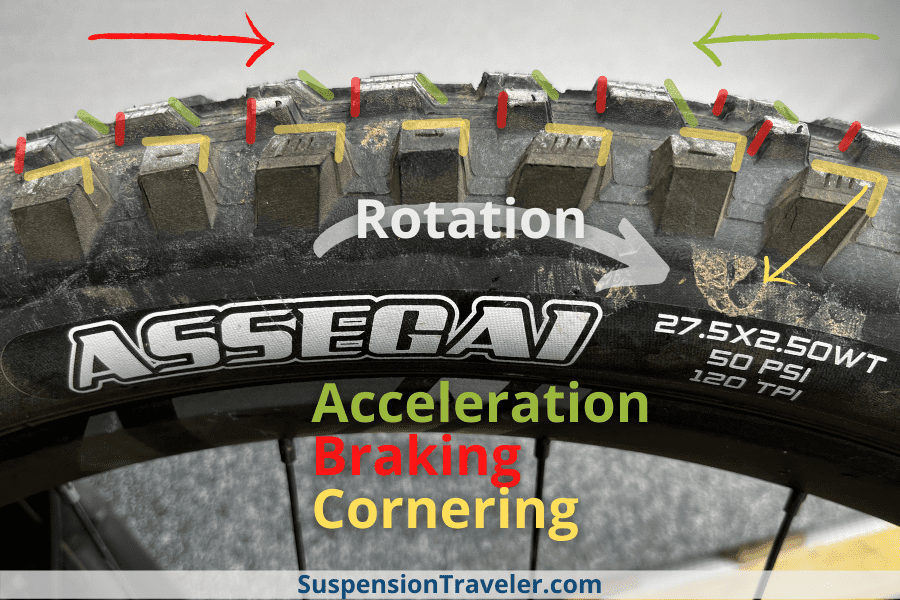
Cornering vs Braking Traction
Tires can do two things very well: cornering and braking. But not at the same time. Braking should be done as “stand up braking” – meaning the bike is upright and all the weight and force push the tires into the ground.
Wide center knobs help with braking. Tall, angled side knobs bite into corners.
Many modern tires like the Maxxis Assegai (left picture) mix long, off-center lugs with wider middle lugs. A mix of both worlds.
Rear tire design is similar to XC tires, which need to roll fast. Think of Maxxis Minion DHR (picture right).
Front vs Rear
That’s why many riders choose different tires for the front wheel and the rear wheel.
Rear tires take more abuse, lock up more often and bear more wight. Better rolling resistance (more angled, continuous center knobs, harder compounds) is often traded for less grip.
But on the front, you need more predictability. Better signals before it breaks traction. Less space between the center knobs and side lugs helps with transitioning into leaning.
Related: MTB tread patterns explained
Maxxis & Schwalbe tire list
This is a list of all Maxxis and Schwalbe downhill tires. To give you an overview of specific tires and the ideal trail type for each.
Tire width
2.4″ is pretty much the current standard width for DH (on 27.5″ and 29″ wheels). It’s a good mix between roll speed, handling and grip.
Up to 2.6″ is normal for downhill. The wider the tire, the bigger the diameter and the better traction it offers on hard surfaces. If in doubt, try it out on the front to see if it’s more confidence-inspiring to you too.
When I went back to 2.4″x27.5 from 2.6″ the previous season, my bike felt very twitchy and nimble.
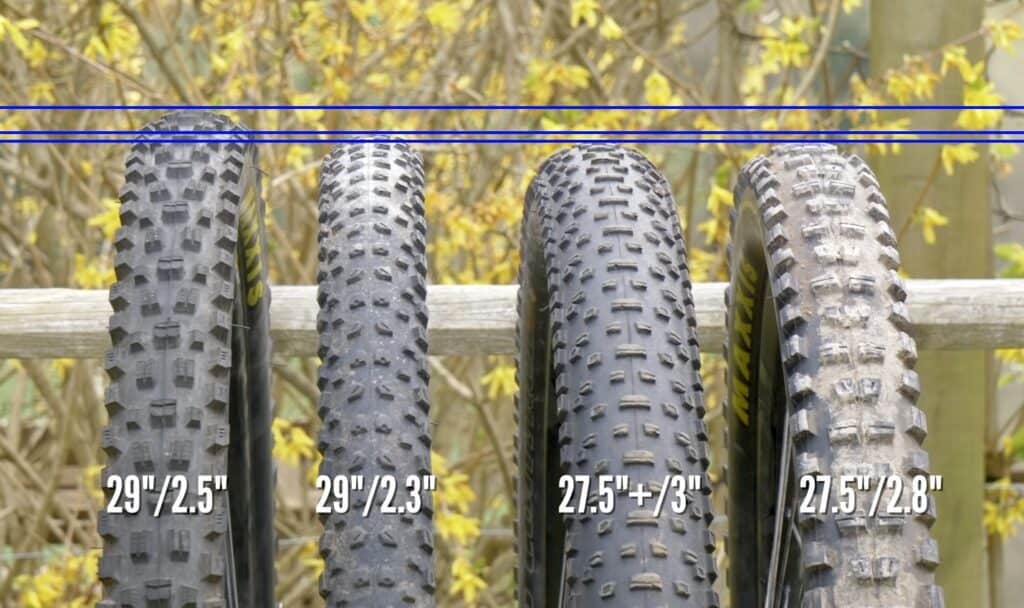
Walking through the DH World Cup pits in Leogang last year I had a peek at what the pros were running in these mixed conditions (it was dry and dusty, then wet and soggy).
The vast majority was on 2.4″ front and rear. Sometimes 2.5″ front tires.
Very few were testing tires, which tells me they prefer predictability over fine-tuning their tires to each track or condition.
Related: MTB tire sizes explained
Casings
If you struggle with flat tires, get the thickest, stiffest casing – which is also the heaviest. Most brands offer dual-ply casings for DH.
This means they have double the layers for extra thick, stiff casings that can handle impacts and don’t fold when cornering aggressively – even with lower tire pressures.
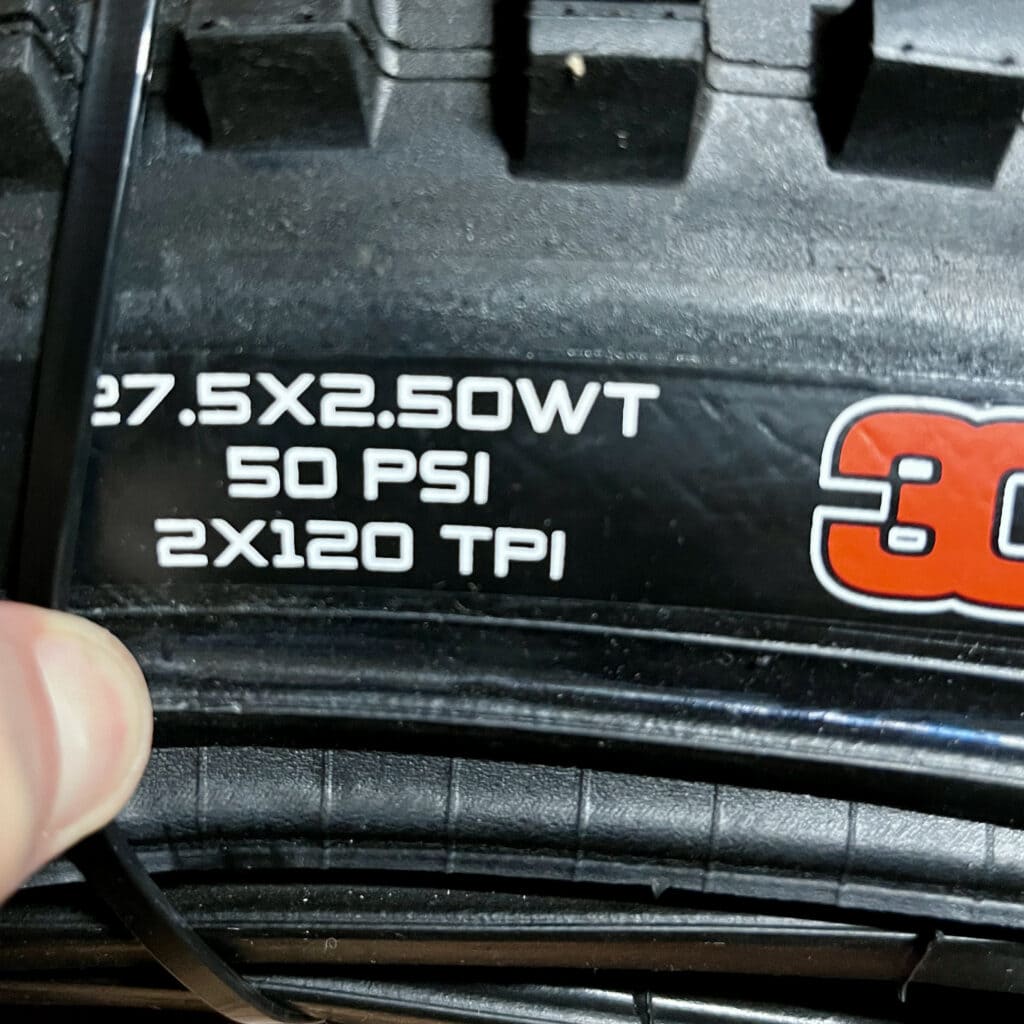
Casings are a balance between weight and puncture protection. Most tire brands have two gravity options available.
Maxxis: DoubleDown (DD) or Downhill (DH)
Schwalbe: Super Gravity, Super Downhill
You get the point. Every brand has a similar naming pattern. Casings are just as important as compounds or you’ll be fixing punctures all day.
Casings are also a good indicator if a tire is meant for downhill. Most brands make their tires specific to their intended use – with only the matching casing and compounds.
Related: MTB tire casings explained and 60 vs 120 TPI
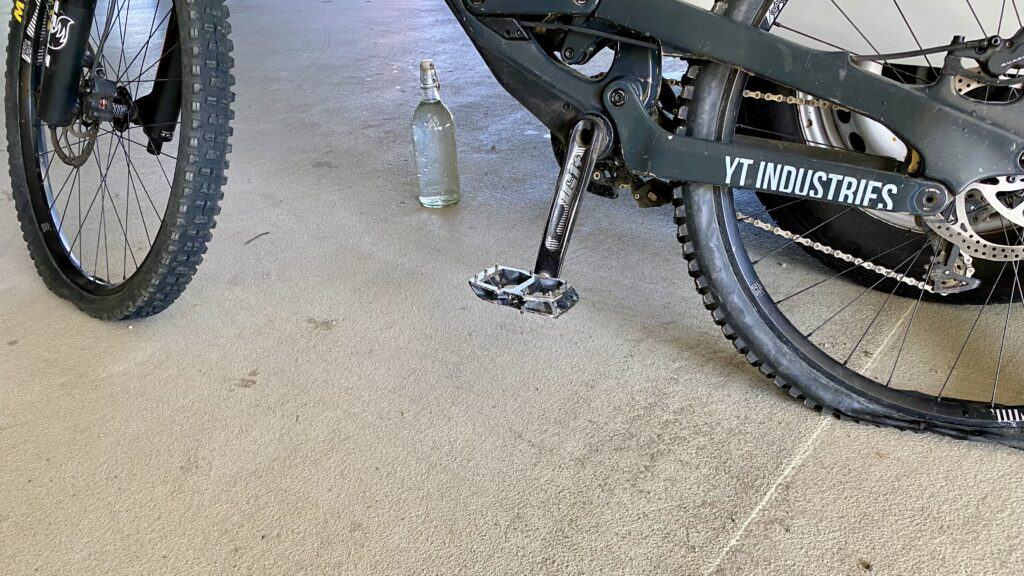
Compounds
Downhill compounds are the softest rubbers out of all MTB tires. The hardest compounds (like MaxxSpeed) are often not even available for gravity tires.
So you can’t go wrong. But based on front vs rear and the types of trails you ride most, there is a choice to be made.
Front tires don’t take as much abuse and are far more critical for traction. So softer compounds make far more sense in most cases. While it’s often way more economical to go with harder rear tires that last longer.
Trail conditions also play a big role. Soft rubber is not always the best choice. Here is a matrix on how to think about trail types and compound firmness:
| Dry | Wet | |
| Hardpack | Medium & Hard | Soft |
| Soft / Loose | Soft | Soft & Medium |
There is also a point to be made about rear tires signaling the loss of traction first. I find it comforting to feel out traction without the fear of folding the front unexpectedly.
